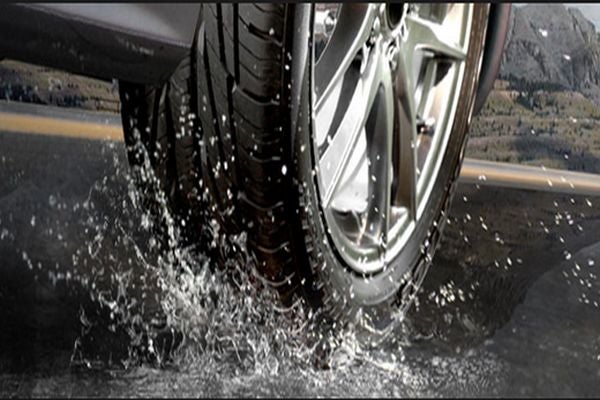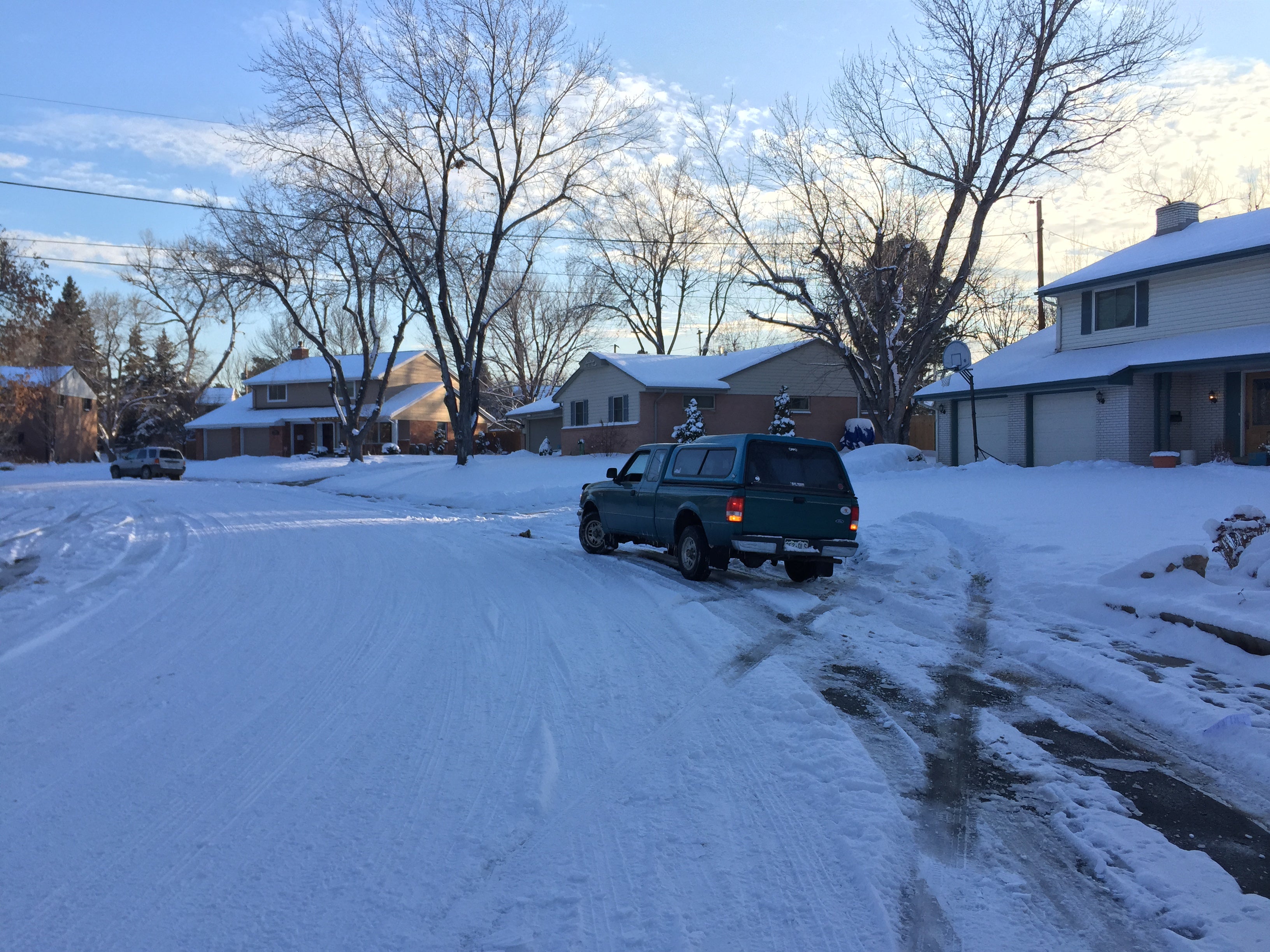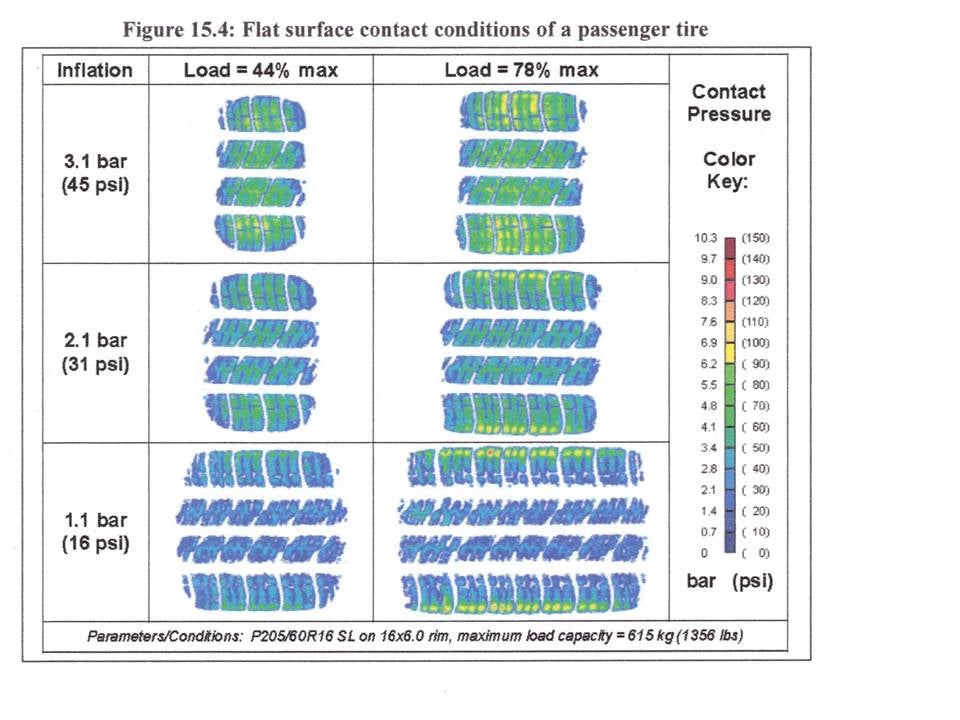 "Anon" (tjsielsistneb)
"Anon" (tjsielsistneb)
03/02/2015 at 18:23 • Filed to: None
 1
1
 32
32
 "Anon" (tjsielsistneb)
"Anon" (tjsielsistneb)
03/02/2015 at 18:23 • Filed to: None |  1 1
|  32 32 |

He says deflating tires help against Hydroplaning, whereas I say It will make you hydroplane more. Who's right?
 sm70- why not Duesenberg?
> Anon
sm70- why not Duesenberg?
> Anon
03/02/2015 at 18:25 |
|
I don't know for sure, but I would have to imagine that, like with snow, a wider surface area will be more likely to float on top (which causes hydroplaning, obviously) whereas a narrower surface area with less weight spread will more likely cut through.
 Textured Soy Protein
> Anon
Textured Soy Protein
> Anon
03/02/2015 at 18:27 |
|
Tire Rack says you're right .
(It was also the 5th result when I googled 'deflating tires hydroplaning.' Come on now, googling things usually resolves arguments.)
 Kailand09
> sm70- why not Duesenberg?
Kailand09
> sm70- why not Duesenberg?
03/02/2015 at 18:28 |
|
I'm going with this one.
 ly2v8-Brian
> Anon
ly2v8-Brian
> Anon
03/02/2015 at 18:28 |
|
Avoid deep puddles and not worry about it. also it is better to have your tires at the pressure they need to be (various reasons). If you go through a deep enough puddle that you hydroplane, get off the gas and keep the wheel pointed the way you need it.
 Mercedes Streeter
> Anon
Mercedes Streeter
> Anon
03/02/2015 at 18:28 |
|
I'd say any tyre not properly inflated (either underinflated or overinflated) has a greater chance of making you hydroplane more.
 BmanUltima's car still hasn't been fixed yet, he'll get on it tomorrow, honest.
> Anon
BmanUltima's car still hasn't been fixed yet, he'll get on it tomorrow, honest.
> Anon
03/02/2015 at 18:28 |
|
If you read down a bit on this article, it says higher tire pressure reduces hydroplaning.
http://ask.metafilter.com/223090/Ive-ove…
 4muddyfeet - bare knuckle with an EZ30
> Anon
4muddyfeet - bare knuckle with an EZ30
> Anon
03/02/2015 at 18:28 |
|
I agree with you, based solely on the fact that the wider the channel, the greater the water displacement. I would imagine softer tyres to narrow those channels as the tread collapses inward when under inflated.
 E. Julius
> Anon
E. Julius
> Anon
03/02/2015 at 18:28 |
|
I'd say over inflating is the way to go here. Less surface area, it will "cut" through the water down to the pavement.
 Anon
> ly2v8-Brian
Anon
> ly2v8-Brian
03/02/2015 at 18:29 |
|
It's more of an issue of off road tires that suck in the rain. Barely any acceleration in my truck will cause the back end to wiggle.
 ly2v8-Brian
> Anon
ly2v8-Brian
> Anon
03/02/2015 at 18:30 |
|
They do that
 Super Nintendo Chalmers
> Anon
Super Nintendo Chalmers
> Anon
03/02/2015 at 18:32 |
|
You're right, he's wrong. An under inflated tire will trap the water rather than squeeze it out thus causing less hard traction on the surface.
http://www.tirerack.com/tires/tiretech…
 Denver Is Stuck In The 90s
> ly2v8-Brian
Denver Is Stuck In The 90s
> ly2v8-Brian
03/02/2015 at 18:41 |
|
Yes they do.

Still find it hilarious that I have no damage and my neighbor didnt care
 Jordan and the Slowrunner, Boomer Intensifies
> Anon
Jordan and the Slowrunner, Boomer Intensifies
> Anon
03/02/2015 at 18:41 |
|
Considering wide tired cars are known for sucking in the rain, and the Viper had to have a rain setting installed because a tester was killed in one, I think it's pretty obvious.
 HammerheadFistpunch
> Anon
HammerheadFistpunch
> Anon
03/02/2015 at 18:41 |
|

DEflating tires increases the tires length on the ground, but it requires an unsafe drop in air pressure to make an appreciable different, and in either case, i'm not sure it would help. Your best bet is to leave your tires alone.
From a theoretical standpoint, I would guess that more ground pressure is better than less, so long as there is sufficient sipping to evacuate water. But practically, you will be less safe at speeds over 40 mph with over or under-inflated tires regardless of the weather versus properly inflated.
 ttyymmnn
> Anon
ttyymmnn
> Anon
03/02/2015 at 18:44 |
|
I can't say for sure, but I would say that tires are designed to move water out of the way and they are designed to be driven at a proper inflation. I don't see how underinflating them would make them work better than the way they were designed to work.
 this is not matt farah's foxbodymiata
> Anon
this is not matt farah's foxbodymiata
> Anon
03/02/2015 at 18:52 |
|
I'm pretty sure your right, mostly because manufacturers do all their evacuation testing at proper inflation, and the tires would be optimized for that.
I'd also say one way to think about it is to think about water craft. A boat with a planing hull like a speed boat will be wide and flat at the bottom, where a boat with a pure displacement hull designed to cut through the water a cruising sail boat for example (modern racing yachts often get on a plane at high speed) will have a steep more triangular cross section.
You could also say a smaller well inflated contact patch is better for the same reason no one tries to water ski with ice skates.
 Garrett Davis
> Anon
Garrett Davis
> Anon
03/02/2015 at 18:55 |
|
A fat, wide surface area on the water will just give a wider spread of the load and a higher chance of skating across the surface of the water. Picture skipping rocks, the wide flat ones will skip along the furthest because it has a wide surface area to distribute its weight, allowing it to skip across with ease. Then picture turning that rock on its side and having the sharper edge hit the water, it will sink right down immediately.
A narrow, sharper angled tire will punch through the water to the surface below, a wider, wallow-y tire will float right across the top.
 Garrett Davis
> HammerheadFistpunch
Garrett Davis
> HammerheadFistpunch
03/02/2015 at 18:56 |
|
A wider surface area is bad on water for the same reason it's great on loose sand. It will distribute the load over a wider area, and coast along on top. A narrow, sharper angled tire will cut right through and bite the solid surface underneath.
 I own dead car brands only
> Anon
I own dead car brands only
> Anon
03/02/2015 at 19:00 |
|
remove the tires. The wheel lips will cut right through the water like a hot knife through butter.
 HammerheadFistpunch
> Garrett Davis
HammerheadFistpunch
> Garrett Davis
03/02/2015 at 19:00 |
|
right. except I think you meant longer, since the tires don't actually get wider, they get longer...but its semantics, its the same net effect.
 Garrett Davis
> HammerheadFistpunch
Garrett Davis
> HammerheadFistpunch
03/02/2015 at 19:04 |
|
Well, technically it will get a bit wider, but yes, mostly long ways.
 Manwich - now Keto-Friendly
> Anon
Manwich - now Keto-Friendly
> Anon
03/02/2015 at 19:28 |
|
A smaller contact patch is BETTER when it comes to avoiding hydroplaning because less water needs to get pushed out of the way.
When you deflate the tires, the contact patch gets bigger, thus it's worse.
Think of it this way... consider snow... are you more likely to sink through the snow and hit the ground in snowshoes or running shoes?
Same principle is a play.
And that's also why it's better to have narrower snow tires.
Now having said that, in extreme offroading with massive tires, you can sometimes get unstuck by dropping tire pressures. But the principle at work there is pretty much the opposite of avoiding hydroplaning.
 JGrabowMSt
> Anon
JGrabowMSt
> Anon
03/02/2015 at 19:51 |
|
You're both partially wrong. Under inflation gives you a wider contact patch, while decreasing the overall traction in the middle of the tread, giving you less of the most important section of the tire.
The important thing to remember though is that hydroplaning is not strictly a textbook case. It doesnt always happen, nor is it a predictable event. You could live life under inflated and never experience a single issue.
Are you right that it makes you hydroplane more? Not in all cases. Is your dad right that it makes you hydroplane less? In my less than expert opinion, only subjectively, but certainly not scientifically. Without tread to disperse the water under the tire, you'll certainly be in big trouble , but under inflation is too broad a term, 4 lbs low vs 14 lbs low is a very very big difference.
 Anon
> I own dead car brands only
Anon
> I own dead car brands only
03/02/2015 at 20:51 |
|
Brilliant! Exposing the lies of big tire!
 ly2v8-Brian
> Denver Is Stuck In The 90s
ly2v8-Brian
> Denver Is Stuck In The 90s
03/02/2015 at 21:03 |
|
That's good
 bubblestheturtle
> Denver Is Stuck In The 90s
bubblestheturtle
> Denver Is Stuck In The 90s
03/02/2015 at 21:34 |
|
Snow tires?
 Denver Is Stuck In The 90s
> bubblestheturtle
Denver Is Stuck In The 90s
> bubblestheturtle
03/02/2015 at 21:39 |
|
There are almost no tire options for my truck due to my 14" wheels. I have some kumho all seasons. Im eventually gonna look for some 15" Period Correct wheels and mount some winters on there.
 Sportwägen, Driver Of The Red Sportwagen
> Anon
Sportwägen, Driver Of The Red Sportwagen
> Anon
03/11/2015 at 21:23 |
|
Hey Alex are you on tonight?
 Anon
> Sportwägen, Driver Of The Red Sportwagen
Anon
> Sportwägen, Driver Of The Red Sportwagen
03/11/2015 at 22:40 |
|
Yep, what's up?
 Sportwägen, Driver Of The Red Sportwagen
> Anon
Sportwägen, Driver Of The Red Sportwagen
> Anon
03/11/2015 at 22:47 |
|
Typing out a paper right now... was wondering whether you could critique it or not
 Anon
> Sportwägen, Driver Of The Red Sportwagen
Anon
> Sportwägen, Driver Of The Red Sportwagen
03/11/2015 at 22:51 |
|
sure I'm not busy, send it on over. When is it due?
 Sportwägen, Driver Of The Red Sportwagen
> Anon
Sportwägen, Driver Of The Red Sportwagen
> Anon
03/11/2015 at 22:56 |
|
Once again, tomorrow :/ Sorry 'bout that :( I'll send over the first two paragraphs now